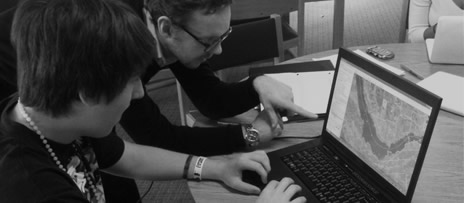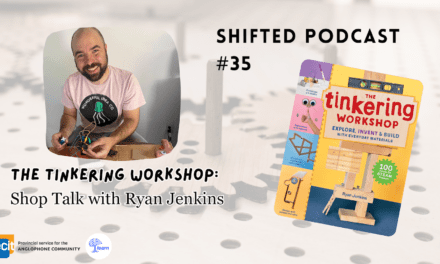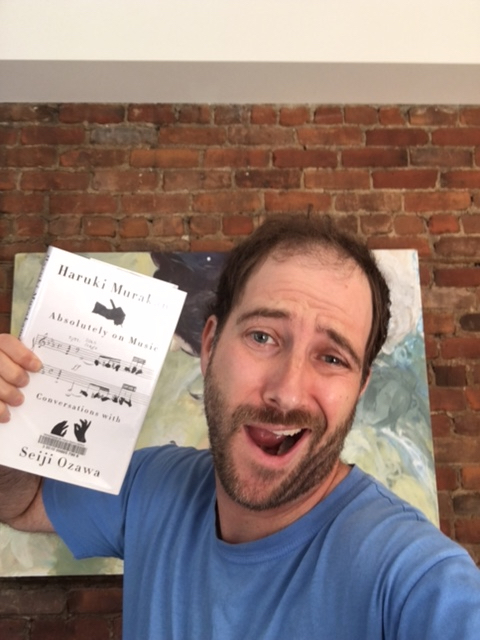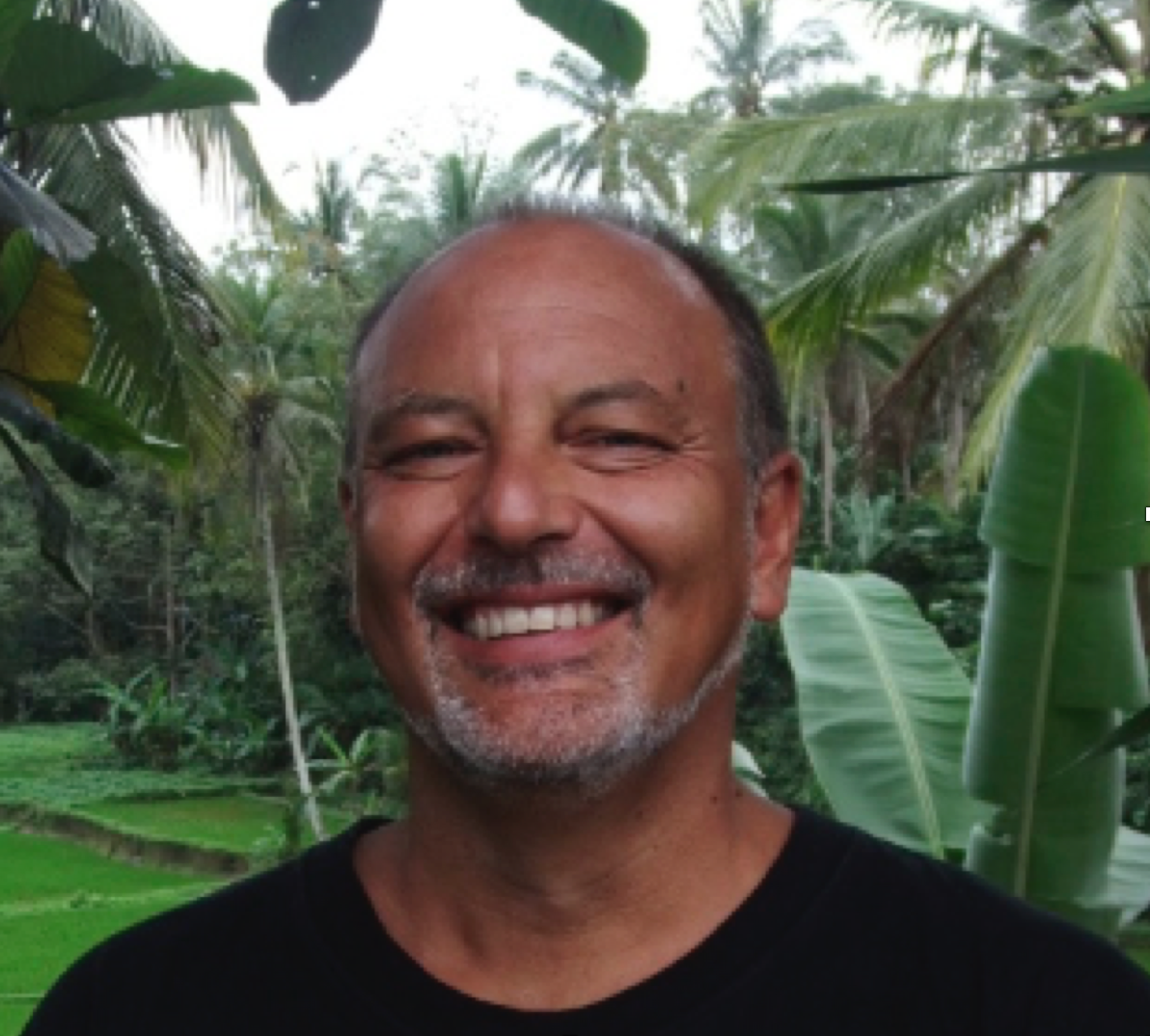The 2015-2016 school year is here and I have the privilege of piloting the new History of Quebec and Canada program. There are three other teachers piloting the secondary III program in the English sector, and about thirty teachers in total in the pilot project.
The purpose of this series is to give some insight into the process of teaching a whole new curriculum from scratch – the successes and challenges that my students and I are facing as we go through this journey together.
Planning
To begin, I decided that I was going to adopt the Understanding by Design framework for planning. For me, the Understanding by Design framework makes the most sense in setting up a new unit, or Learning and Evaluation Situation (LES). Like in any subject, I began by unpacking the expectations of the two competencies – Characterizes a period in the history of Quebec and Canada, and Interprets a social phenomenon – and tried to develop a number of enduring understandings and essential questions that went along with them:
| Enduring Understandings | Essential Questions |
| People move (migrate) for a variety of reasons | Why do people move? |
| Geography and climate affect how people live. | How does geography affect settlement? |
| Colonization involves many challenges. | Why did some attempts at colonization succeed and some fail? |
| Different cultures interact by transforming themselves. | What happens when cultures collide? |
My goal was to develop understandings and essential questions that could be universal, but also lead towards specific historical knowledge in our curriculum. We’ll have to see if the questions are too broad and need to be made more specific for my students.
After I had developed what I wanted my students to understand and the related essential questions, I went deeper into the knowledge to be acquired in order to map out the sequence of lessons that I planned to do. I set up the lessons around an essential question or two, and developed learning intentions and corresponding success criteria.
For example, my first lesson(s) will centre on the arrival of the ancestors of the indigenous people of Canada. The essential questions that I chose were: Why do people move? and How does geography affect settlement?
I set up the learning intentions and success criteria in a chart form that I’ve given to students so that they know exactly where we are going throughout the unit and what they need to do in order to be successful in the activities that we will do. I included a check box so that they can physically check off that they have met the success criteria.
| Learning Intentions | Success Criteria | |
| Know the Asian migration theory | I can name the migration route of the First Occupants and indicate it on a map. | |
| Know the different Aboriginal groups in the territory of Quebec. | I can name the groups that belonged to the different language families and indicate them on a map. | |
| Explain the way of life of different and social structures of native groups. | I can explain the way of life and social structures and categorize artifacts belonging to different native groups. |
Ideally, I’d like to build more complexity into the third (or fourth) learning intention. I think, however, that for an activity at the beginning of the year, categorizing the artifacts will get students to think critically about the ways of life,social structures, resources available, and geographical areas of the various groups.
My next step was to plan the student assessment for the LES. I used a table of specifications, which is also known as a blueprint, in order to make sure that I included all of the relevant knowledge, skills and competencies on the test. The following table of specifications is one that I put together with a colleague for Secondary I History and Citizenship .
| Learning Outcomes | Historical Thinking Skills | Course Content/Topic | % of class time on topic | # items | How it is assessed |
| Students will judge the extent that the Western Roman Empire continued into the beginning of the Middle Ages | Continuity and Change (interwoven) | 2 classes – presence of Christianity, use of Latin in the Church, divided territory, monastic orders, the papacy) | 11% | 2 | Short Answer –Test |
| Students will compare the relationships between the individuals in feudal society | Continuity and Change (progress, pace of change, periodization) | 5 classes – Social, political and economic organization | 29% | 6 | Short Answer – Test |
| Students will determine and distinguish elements of continuity and change in the Crusades | Continuity and Change (turning point, progress and decline, pace of change, periodization) | 11 classes – Culture – Crusades, pilgrimages, effects of the Crusades | 60% | 12 | 7 Short Answer-Test5 – Performance Piece: Concept Map |
The beauty of the table of specifications is that it allows you to see what emphasis that you are placing on a particular topic and you can contrast this to the amount of class time spent on the topic.
For the unit on the native people, I realized that I had an imbalance on the test as I had two questions related to a topic that we were going to spend less time on than other topics. As well, it allowed me to see that at first I had too few lower order items on the test and that I needed to switch one of two with a higher order item.
I’ve found that these three tools have been really helpful in the planning process. The enduring understandings and essential questions framed the learning intentions and the success criteria. As well, the table of specifications aided to make sure that I stayed on track with my summative assessment and to balance the knowledge and skills that I wanted to evaluate.
In my next post, I’ll be discussing the advantages and disadvantages of flipping the classroom, as well on how I’m using formative assessment this year. Meanwhile, what method do you use to plan out content and how do you make sure that you stay coherent with evaluation?
Some useful links:
Quebec government hopes to improve ‘national history’ curriculum
Vers un nouveau cours d’histoire nationale au secondaire
ThenHier report on first (not final!) drafts of program:
- Nouveau programme d’histoire du Québec et du Canada (PROVISOIRE)
Part 1 http://thenhier.ca/en/node/12495 Part 2 http://thenhier.ca/en/node/12742 - Planification annuelle
Projet pilote du nouveau programme en histoire du Québec et du Canada http://thenhier.ca/en/node/13733
Consultation Document (November 2013)
For the Reinforcement of the Teaching of Québec History in Elementary and Secondary School
(en français à http://bit.ly/1iLWc3r )
LCEEQ response:
https://lceeq.ca/sites/default/files/media/documents/History%20Consultation%20Final.pdf
GRUS response:
http://grus.recitus.qc.ca/tiki-download_file.php?fileId=217
THE MEANING OF HISTORY (Final report following the consultation)
http://www.education.gouv.qc.ca/fileadmin/site_web/documents/dpse/formation_jeunes/sens_de_histoire_AN.pdf (LE SENS DE L’HISTOIRE en français à http://bit.ly/1ja7RZU )






Very interesting, Matt! Congratulations on being selected to pilot the course and thank you for sharing your experiences.
I look forward to hearing about your perceptions of flipped learning and your use of formative assessment later in the year.
Count yourselves lucky that they are changing the history curriculum! The grade 10-11 courses in science, chemistry and physics need some serious repairs, but unless I am misinformed (hopefully!) none are on the horizon. If anyone is interested in reading constructive criticism of the pot-hole-filled science curriculum, read http://uvachemistry.com/2014/04/06/1534/